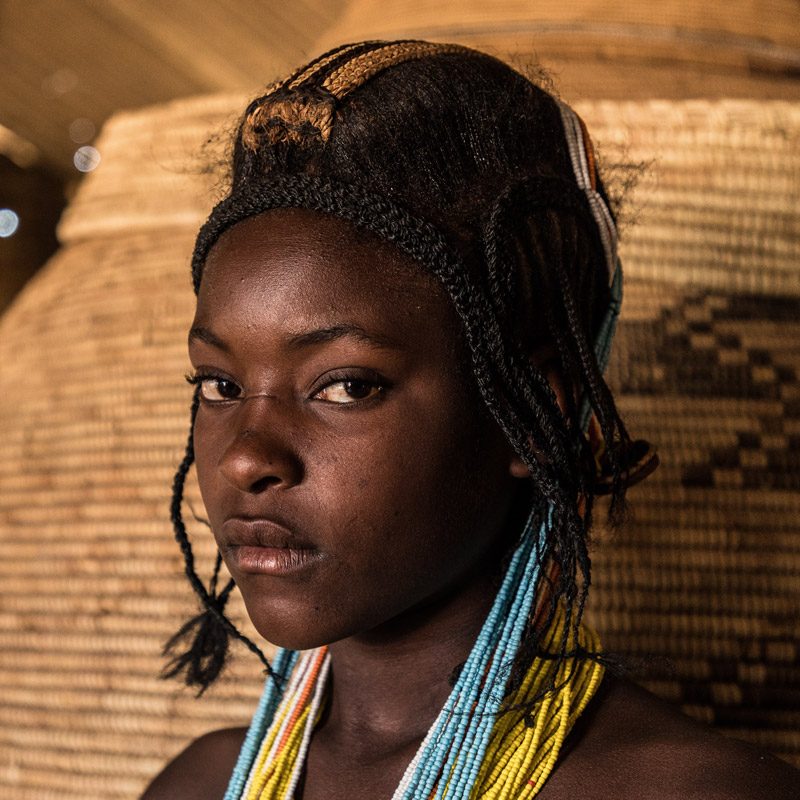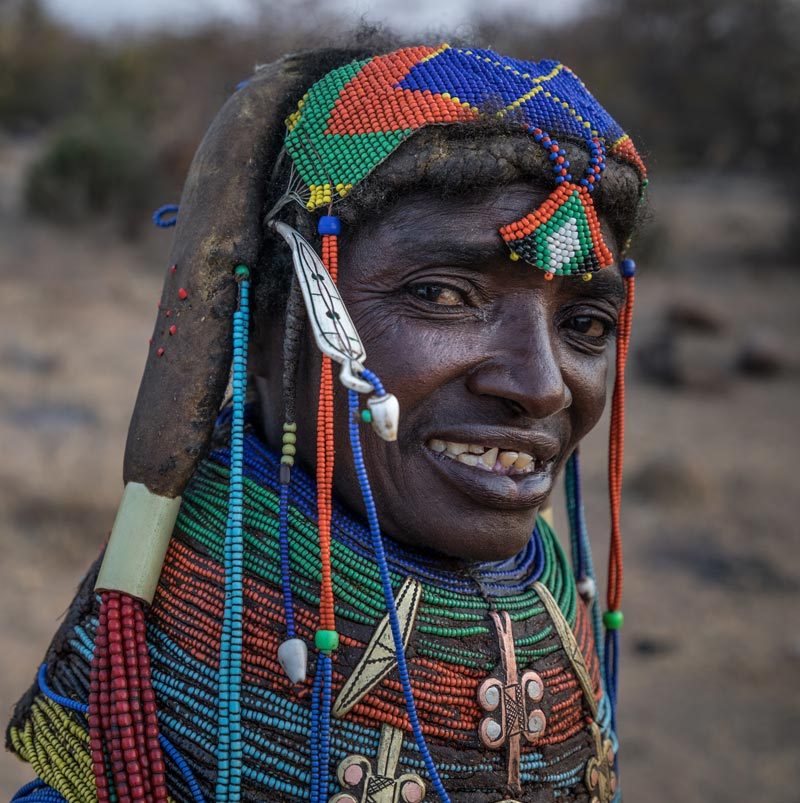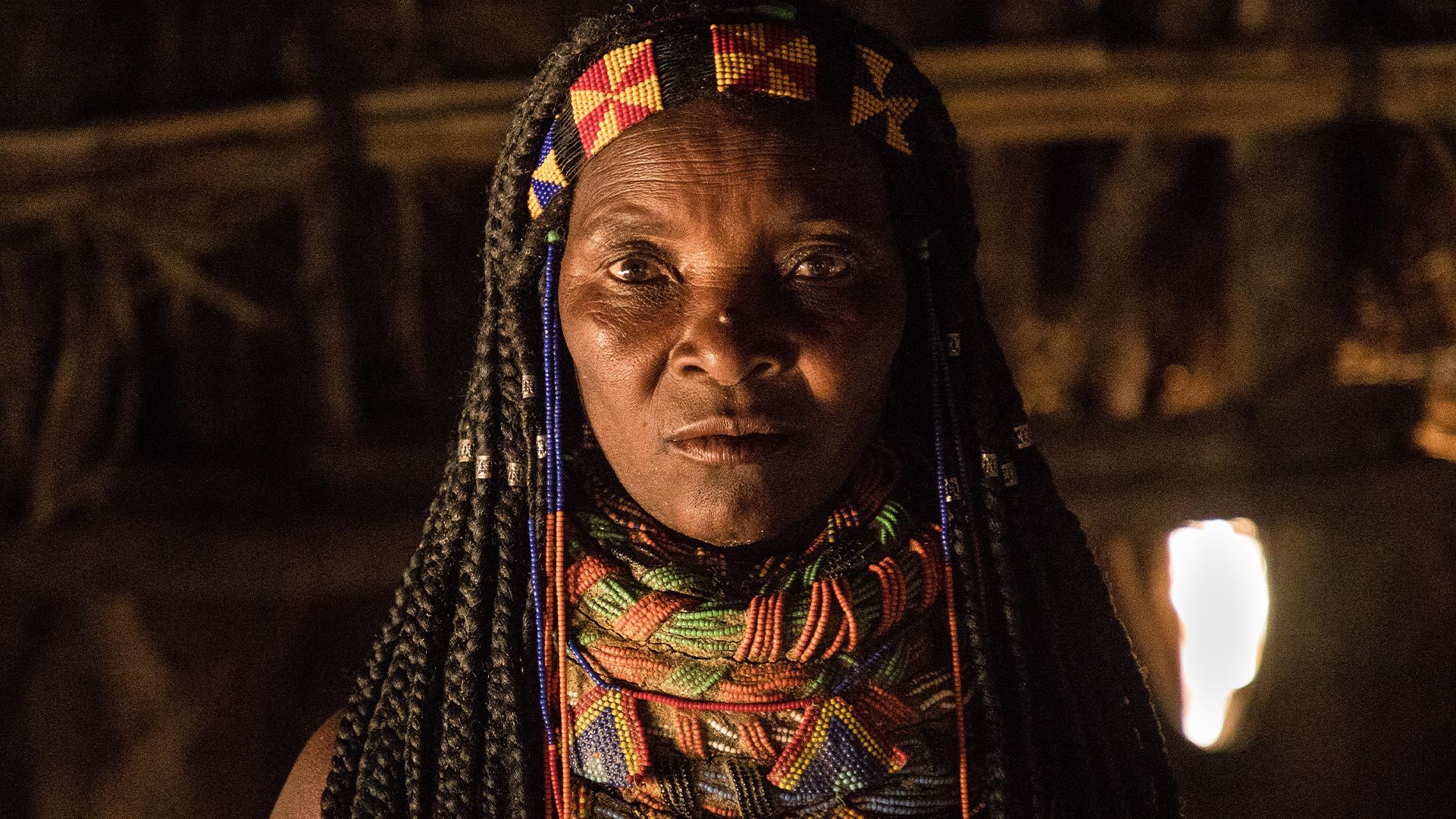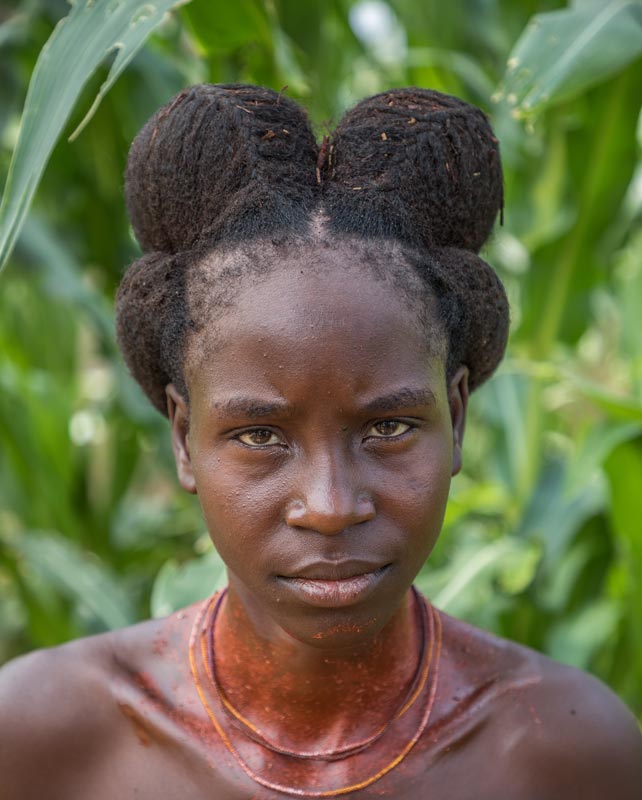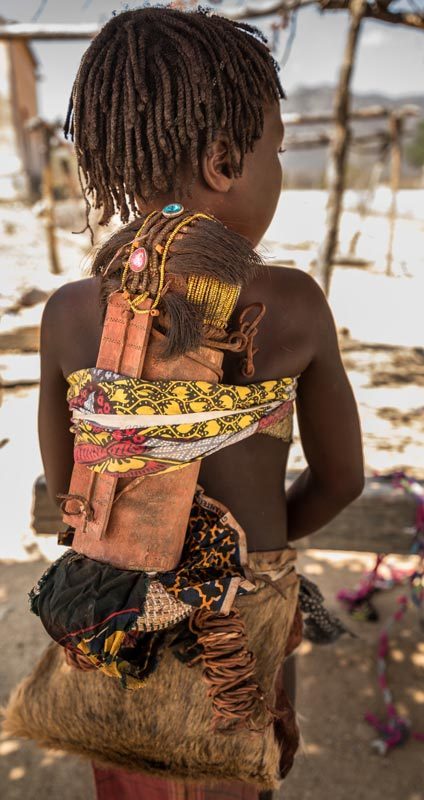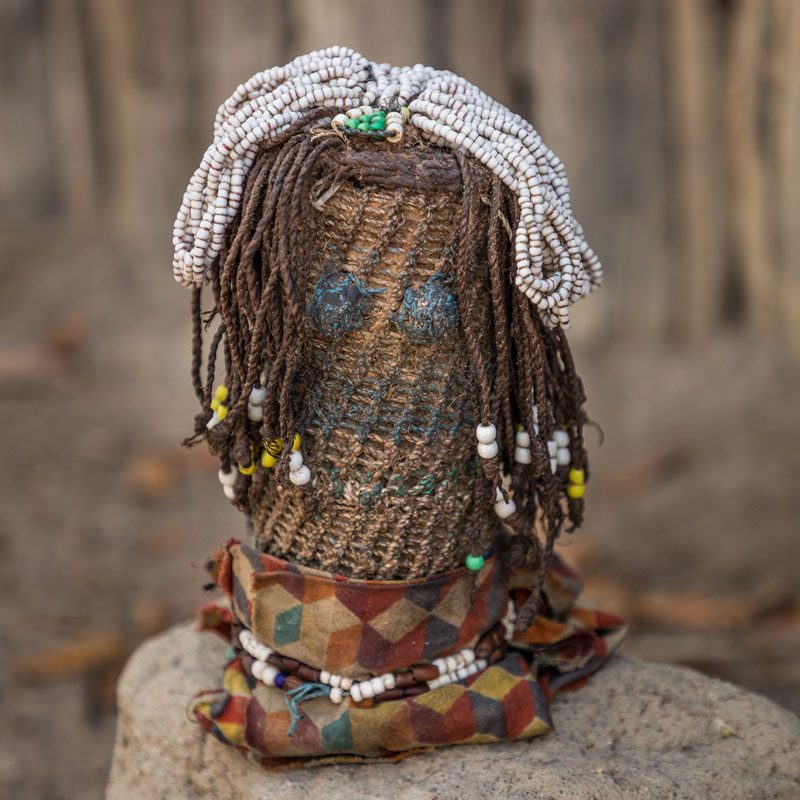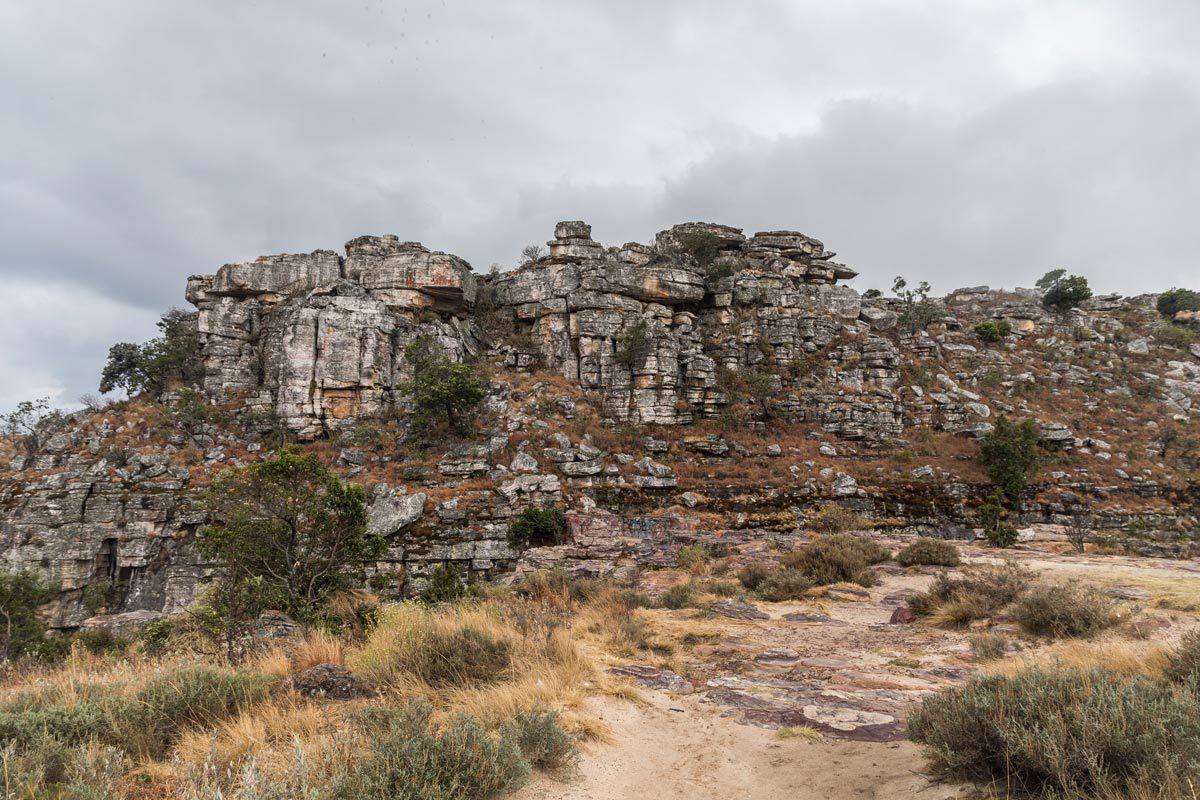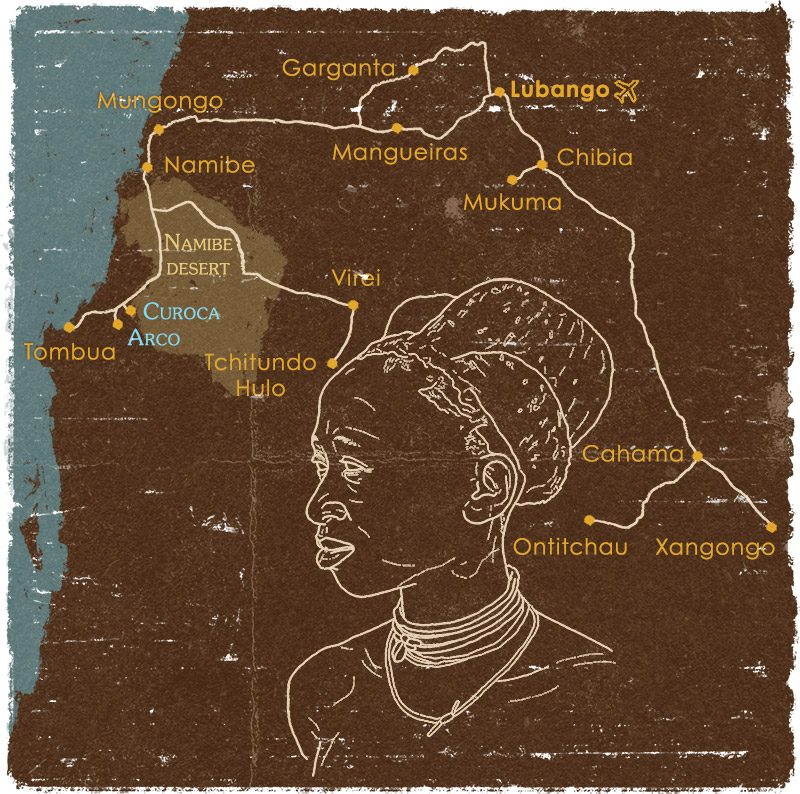Discover the highlights of this trip to Angola
► Tribes that we will meet along the trip
Plain Muila and Mountain Muila
After introducing ourselves to the soba (traditional chief) we will visit the the Plain Muila village. The women of this ethnic group are the ones who decorate themselves the most with colored necklaces and complex hairstyles. During this trip to Angola, we will also meet the Mountain Muila, who are more traditional than those of the plains.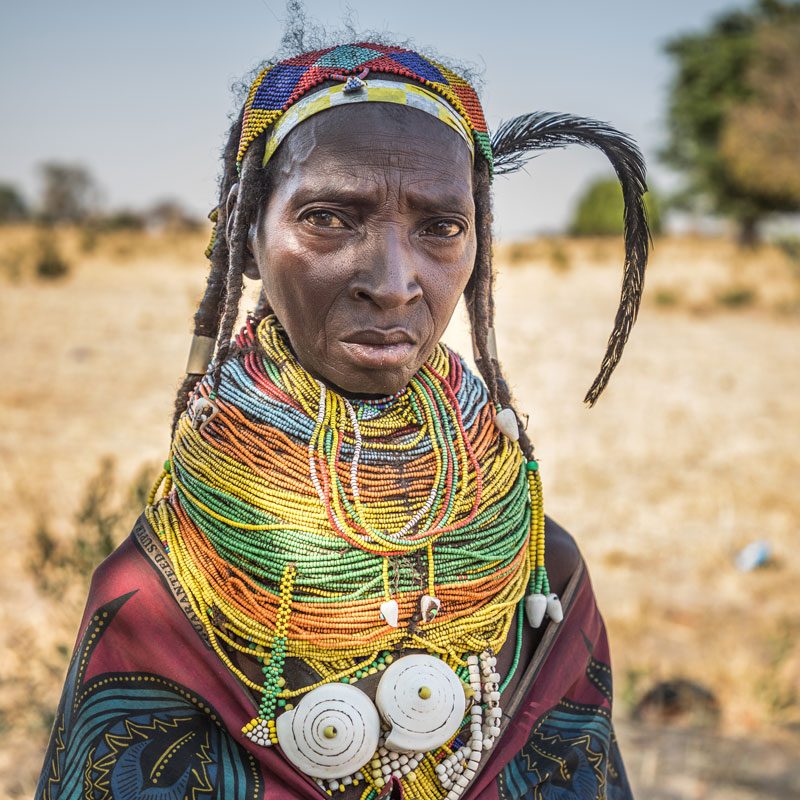

Gambue
During this trip to Angola, we will be able to meet the Gambue tribe. The Gambue have similar customs to their Muila and Handa neighbors. One of them is the use, by women, of bead and clay necklaces. They also have complex hairstyles, which indicate the marital status of each woman.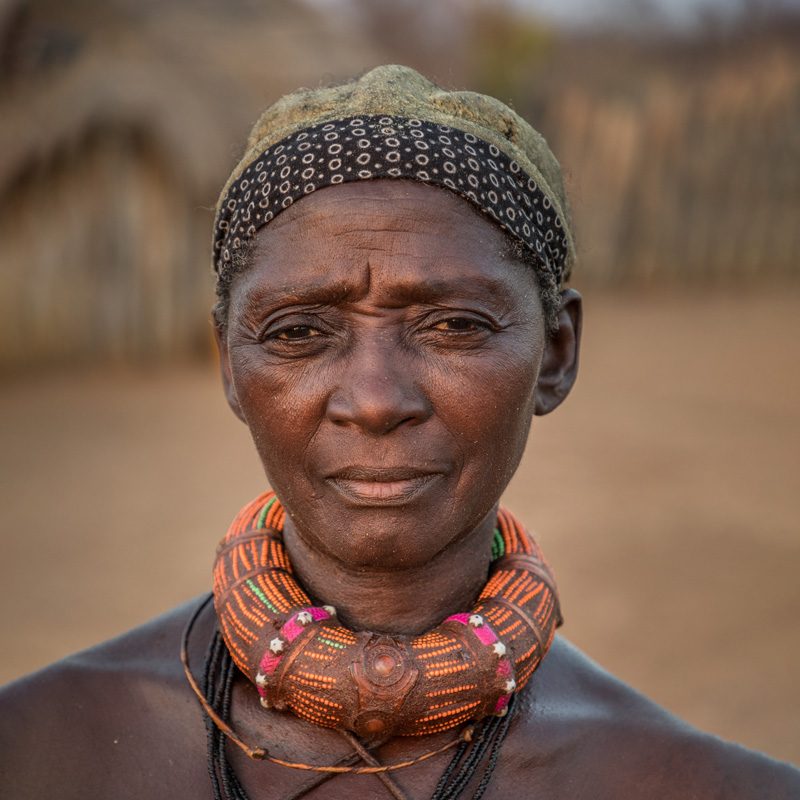
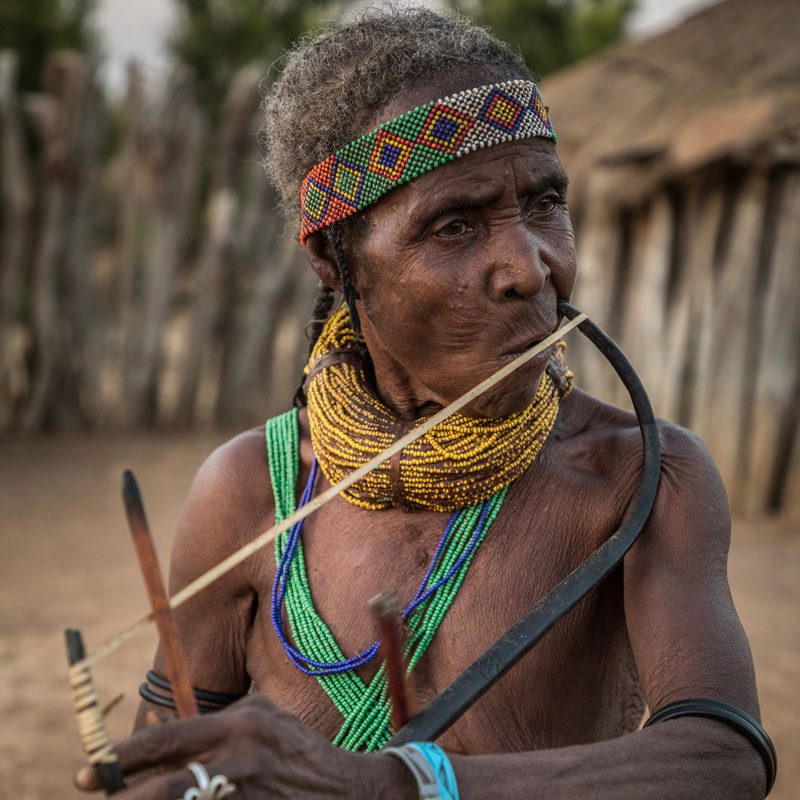
Dimba
The Dimba are a cattle-raising society that inhabits the savannah around Cahama. The women keep the typical hairstyles that have an air of Melanesian headdresses. On this trip to Angola we will spend some time with them to learn about aspects of their daily life. We will have the opportunity to learn about their music, since they are famous for being great lovers of religious songs and dances.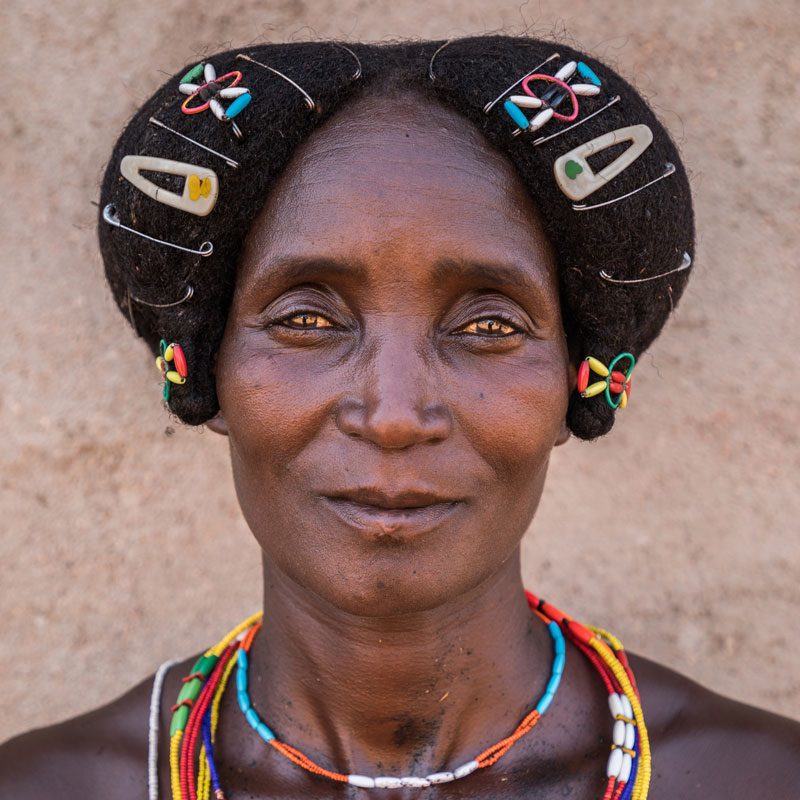

Cubal
The Cubal are a semi-nomadic group, whose economy is based on livestock and agriculture. It was the last ethnic group to succumb to the Portuguese in colonial time. Cubal women wear an original and unique headdress, called ‘ompota’ and they also use belts to tighten their breasts, as a bra, called ‘oyonduthi’. During this trip to Angola, we will have the opportunity to meet the Cuban tribe.

Ngendelengo
The Nngendelengo are semi-nomadic herders, hunters and subsistence farmers. Living in a forested environment has allowed them to develop a rudimentary charcoal business. Machetes are an essential part of their attire, which is complemented by large crests as a hairstyle for unmarried boys and multiple topknots for women. During this trip to Angola, we will have the opportunity to admire the traditional hairstyles of the Ngendelengo people.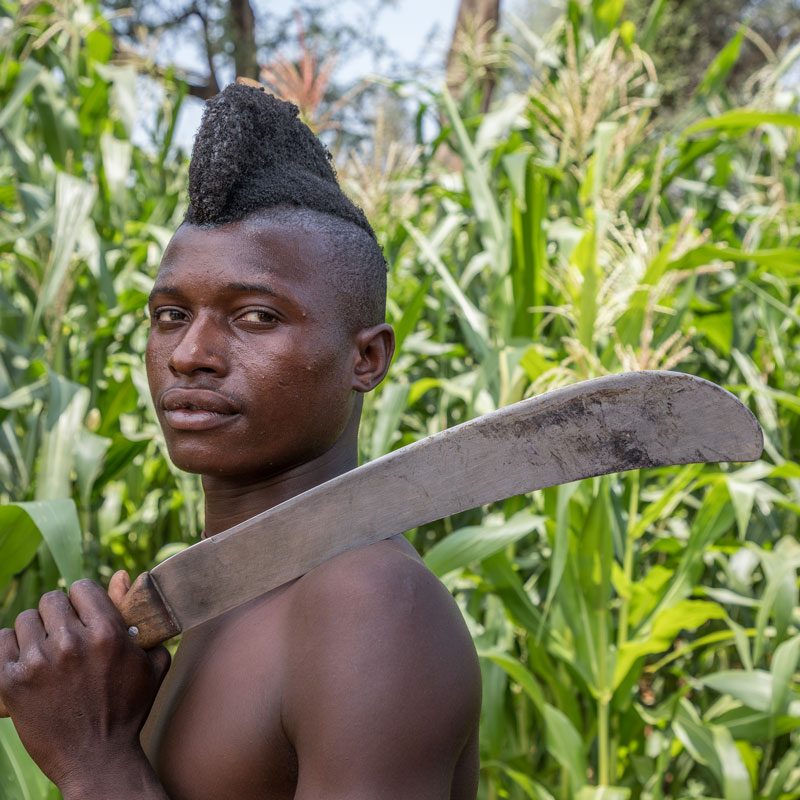
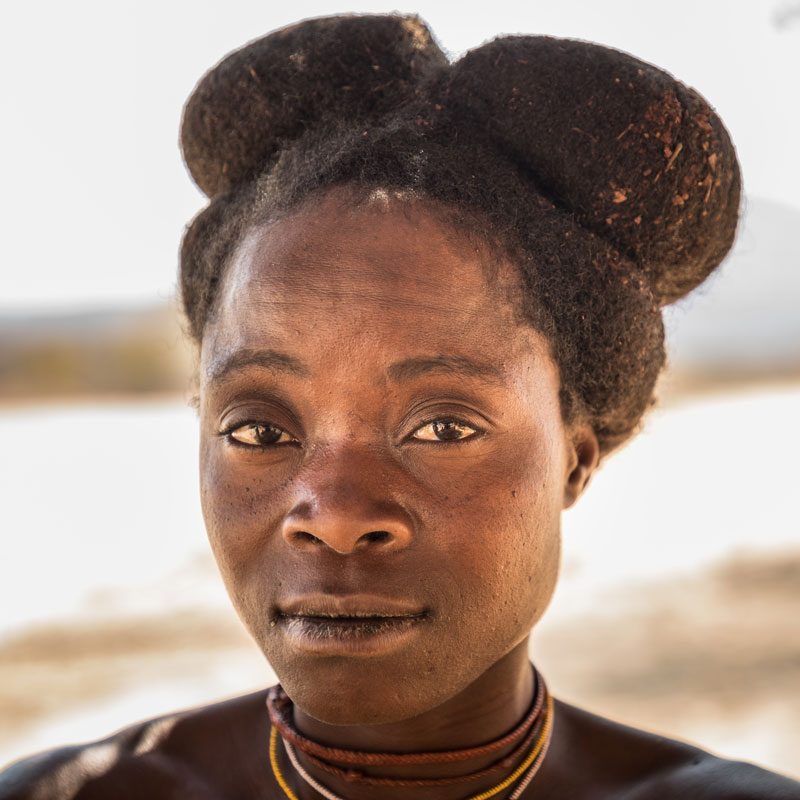
Discover the tribes of Angola with the book 'Last Tribes of Angola'
If you want to know more about the tribes of Angola, you have the book 'Last tribes of Angola' available for sale, the result of the joint work of the anthropologist Joan Riera and the ethno-photographer Aníbal Bueno. Written in both English and Spanish (bilingual edition), and enriched with a wealth of photographs, illustrations, and maps, the book is a unique visual guide to the most remote tribes of southwestern Angola. Click here if you are interested in buying it.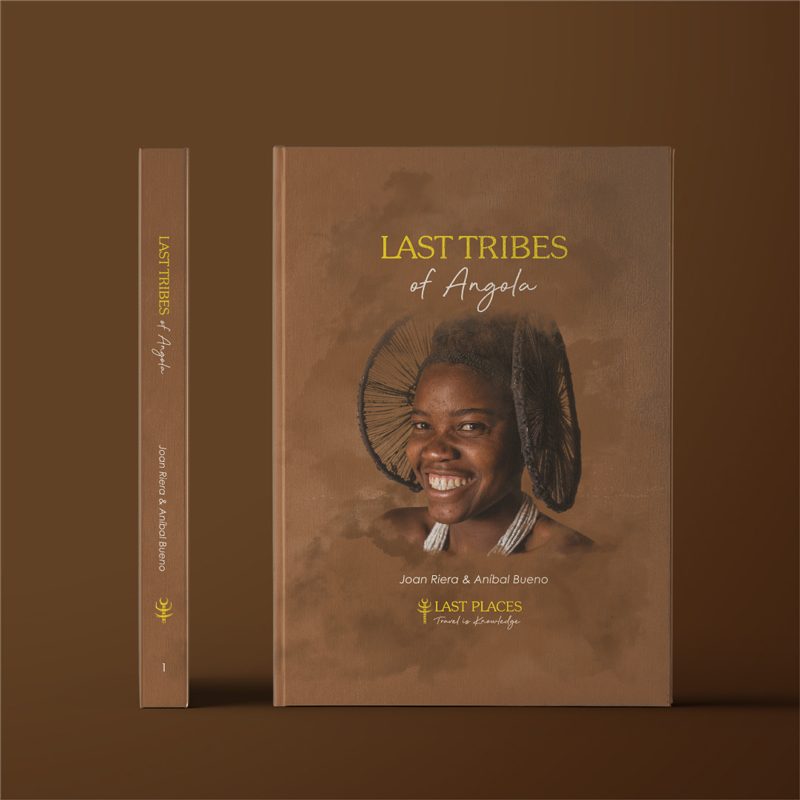

► We will admire the giant baobabs of southern Angola
During this trip to Angola, we will have the opportunity to admire giant baobabs. The area near Xangongo is full of large baobabs scattered everywhere.


► We will enjoy Portuguese colonial and vernacular architecture
Colonial architecture
The Portuguese were in Angola from 1575 to 1975 and left a cultural legacy of great anthropological and architectural interest. The churches and forts in the Baroque style, the Art Deco buildings of the coastal cities and the ‘tropical modernism’ style that lasted from 1945 to 1975 stand out. Angola's architecture allows the traveler to discover its Portuguese colonial past. During this trip to Angola, we will have the opportunity to admire different examples of Portuguese colonial architecture.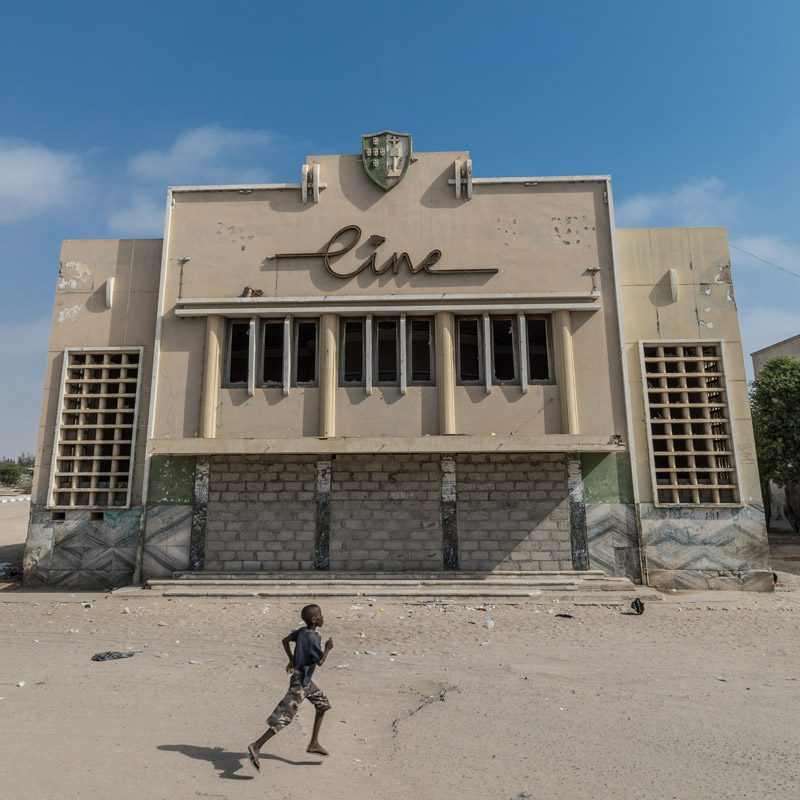
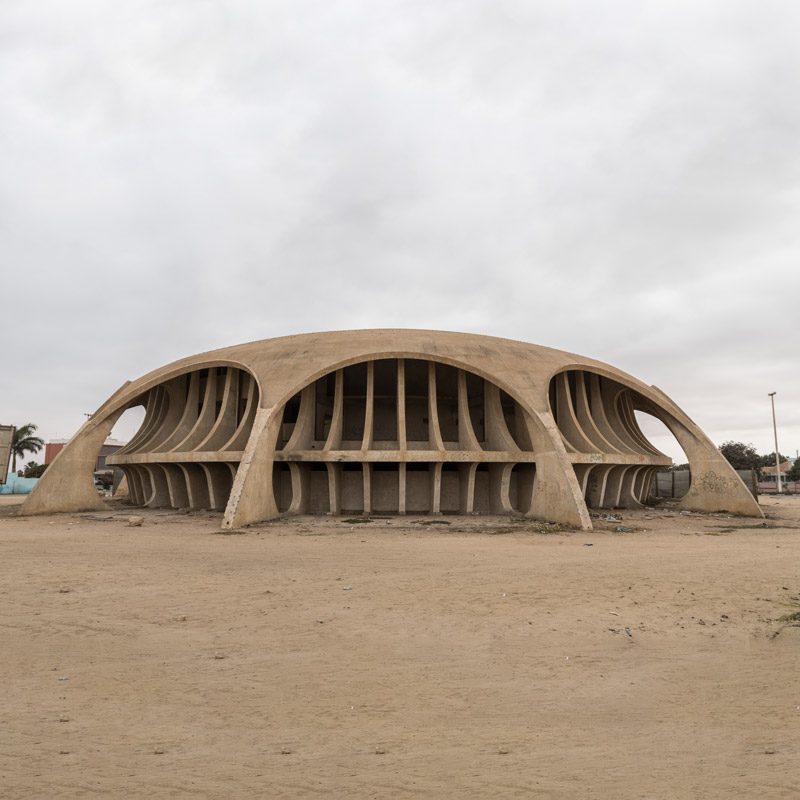
Vernacular architecture
In addition, we will enjoy the vernacular architecture that the different tribes that we will visit during the trip to Angola continue to practice.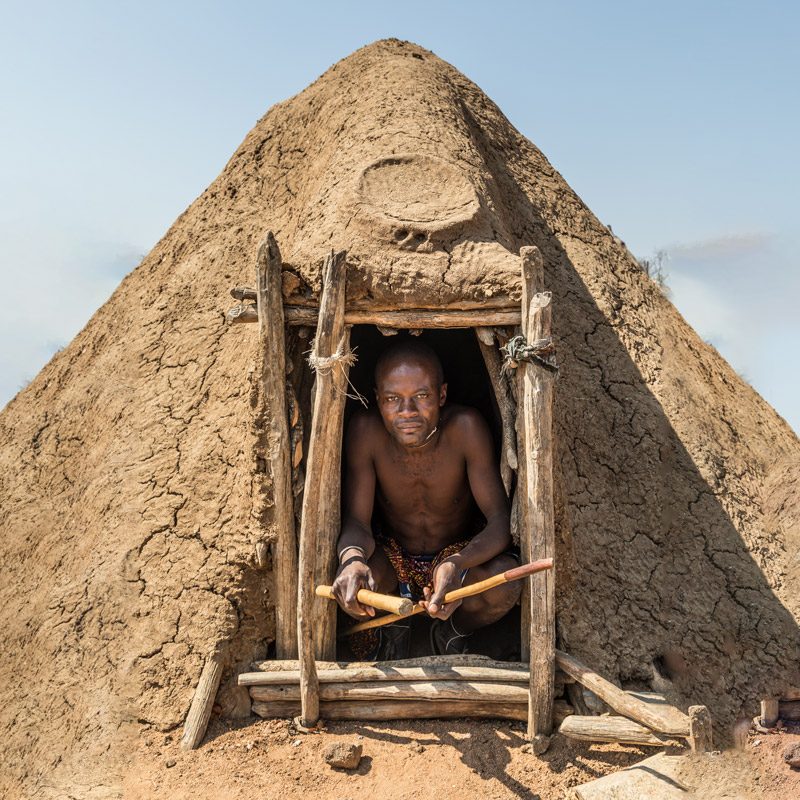
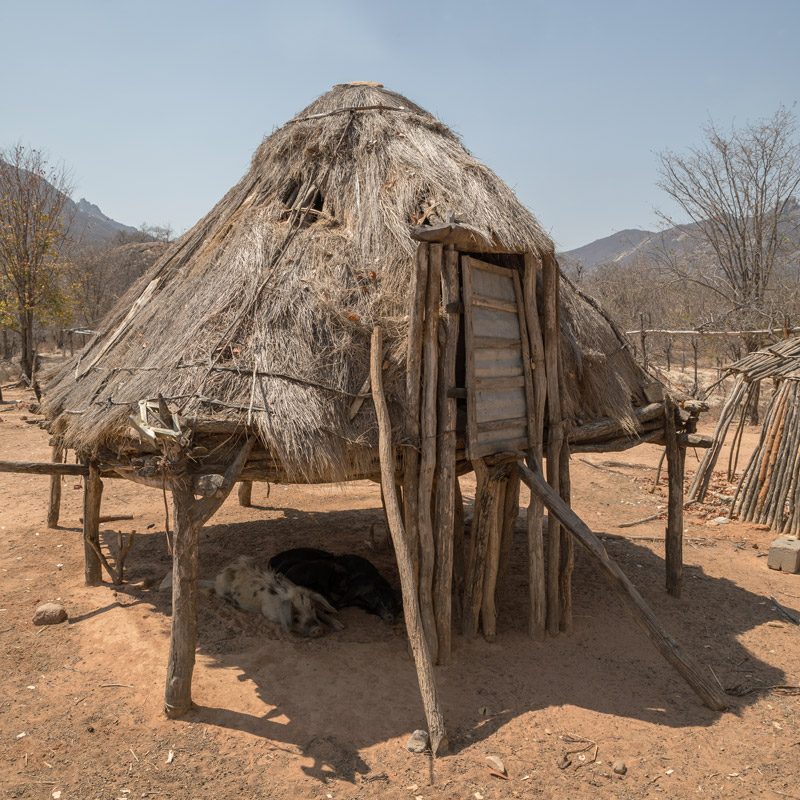
© Photos by Aníbal Bueno
► Download the itinerary for this trip to Angola
This ethnographic trip to Angola is specially designed for lovers of cultural diversity and human contact. Click on the button below to easily reach the booking form.

